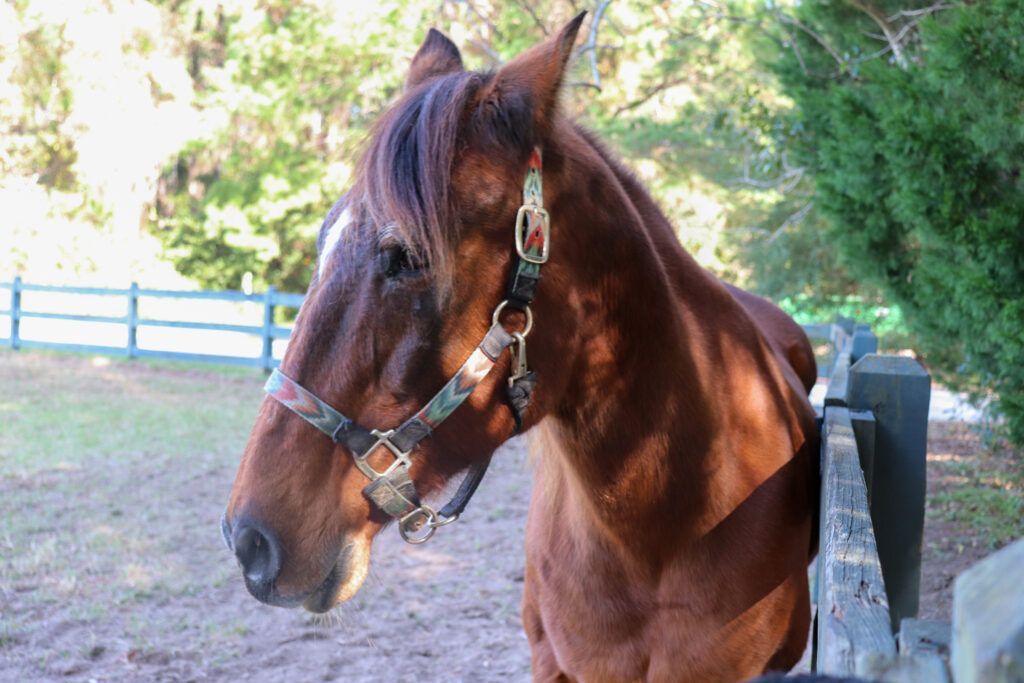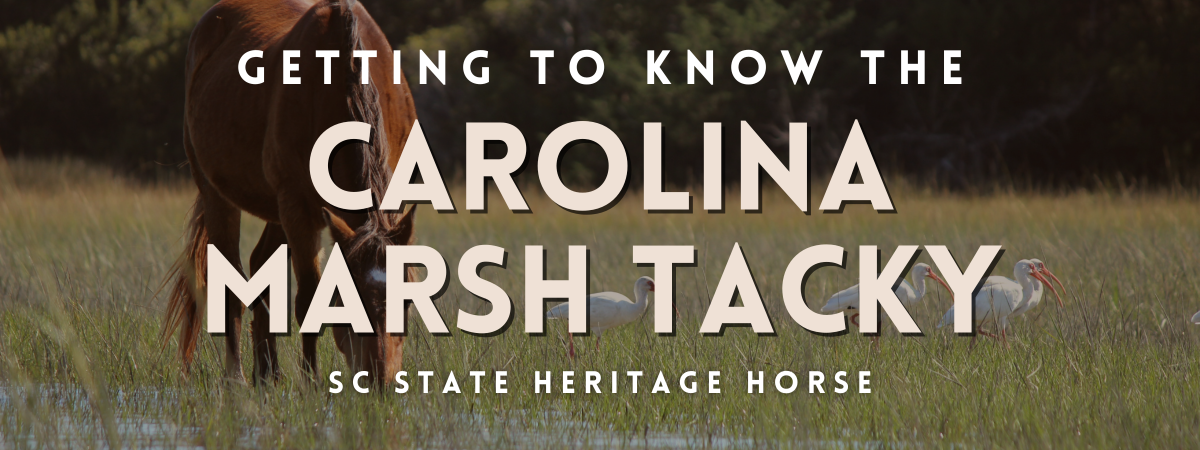Here on Hilton Head Island, we love our natural surroundings and wildlife. We advocate for the true locals who can’t speak up for themselves, and ensure that the island’s guests and locals (the human kind) are properly educated on how to stay respectful to and ultimately help local habitats.
For example, we understand how sad it is to knock down your sandcastle or fill in its moat after putting so much time and effort into building it. But helping nesting sea turtles to easily and peacefully find their way up and down the beach is worth it, we promise. And those cute little baby gators in the pond beside the bike path will make for a great Instagram story, but if you get too close or try feeding them…just know that where there’s a baby gator, there’s a protective mama gator somewhere very close by.
Sometimes learning about local wildlife uncovers more of the region’s past, like the Marsh Tacky. Read on to learn more about the Marsh Tacky, and where you can see them on your next trip to the Lowcountry.

What in the World is a Marsh Tacky?
A Marsh Tacky is a strain of the Colonial Spanish Horse breed that is currently critically endangered. Small but mighty, these horses are typically anywhere from 13.2 to 15 hands (that’s horse talk for 4.4 ft. to 5 ft. measured from the ground to the top of the horse’s shoulders, or, their “withers”) and weigh 700 to 900 pounds.

These horses are smart and sure-footed, making them popular in South Carolina’s coastal areas since they made riding through the swampy terrain look like a breeze. Unlike other breeds who would panic while trying to navigate marshes, the Marsh Tacky could swiftly and calmly trod through pluff mud, water, and other tricky situations.
Their name shows just how popular they were at one point. The “Tacky” portion of the name stems from them being so “commonly” seen and “cheap” to own, making them the ideal horse to have in the region for farming and hunting, regardless if you had the means to pay for a more expensive breed. That was before the widespread use of tractors and cars.
Now, there might be fewer than 400 horses left. In attempts to bring awareness to the decline of these horses, the Carolina Marsh Tacky Association was created and approved by the Secretary of State of South Carolina at the end of 2007. Additionally, the group strives to research and maintain Marsh Tacky history, while working with the Livestock Conservancy to create a breed registry and expand healthy breeding with genetic diversity, a challenge for such a small number of remaining horses.
A Brief History of this Fearless Horse
In 2010, the Marsh Tacky became South Carolina’s State Heritage Horse and was celebrated for its unique part of the state’s history dating back hundreds of years. As previously mentioned, the Marsh Tacky developed from what is now known as the Colonial Spanish Horse breed and could be found in the region between St. Simmons Island in Georgia, and Myrtle Beach in South Carolina. Differences in DNA formed two additional distinct strains that can be found in the Southeastern United States today: the Bankers that roam a portion of North Carolina’s Outer Banks, and the Florida Cracker Horse, sometimes called the Chickasaw horse—not to be confused with the original Chickasaw horse…but that’s a story for another day.
Historians track the Marsh Tacky back to the 16th century when the Spanish founded the first colonial capital of Spanish Florida, Santa Elena in 1566. Santa Elena is actually modern-day Parris Island and sits right across the Port Royal Sound from Hilton Head Island. Under attack by the French and Native Americans in the region, the final straw was the impending English threat, specifically raids on other Spanish settlements by Sir Francis Drake. Spain consolidated its Florida colony, and it’s said that through all of the turmoil and eventual desertion of Santa Elena, the remaining horses survived on their own throughout the Sea Islands—a testament to how fearless and mighty they were and still are today.
Fast forward to the horse’s first major impact on United States history during the American Revolutionary War. It is said, that Brigadier General Francis Marion, the legendary and cunning “Swamp Fox,” led his soldiers to enough victories against the British, that he ultimately helped turn the tide of the war. His preferred horse? The Marsh Tacky, of course. Their size and tenacity were perfect for Marion’s guerrilla tactics. The unique gait of the horse is now called the “Swamp Fox Trot,” after Marion.

As for the Civil War, owners of Marsh Tacky horses road them off to war, unlike other troops from the north that were given cavalry horses. Some barrier islands and areas in the Lowcountry were abandoned during the war, with some horses being left to join feral herds, running wild on Daufuskie Island, and staying isolated to keep their original features. After the Civil War ended, surviving horses were joined together once more as areas were being rebuilt and repopulated. The Gullahs relied on the Marsh Tacky for farming and transportation, and the horses became popular in coastal communities once again.

Later in World War II, the US Coast Guard used Marsh Tacky horses to patrol the beaches in search of Nazi U-Boats and other threats. More than twenty years later, the same beach that the Beach Pounders defended was being used in the 1960s for Marsh Tacky races on Hilton Head Island. The races were restarted for a few years in 2009 during the Gullah Cultural Festival.

Your Chance to See or Ride a Marsh Tacky
The best way to see a Marsh Tacky on Hilton Head Island is to take a trip to the Coastal Discovery Museum. Free to visit, your group can walk throughout the museum and the grounds of Honey Horn to learn more about the island’s history and see one of the Marsh Tacky horses.
Have a true Daufuskie Island experience and join the Meet a Marsh Tacky: Living History Tour by the Daufuskie Marsh Tacky Society. If you’ve ridden before and want to take a trail ride through the forest or on the beach in a private setting, learn more about their offerings on their website.
